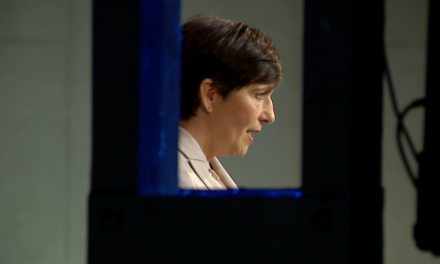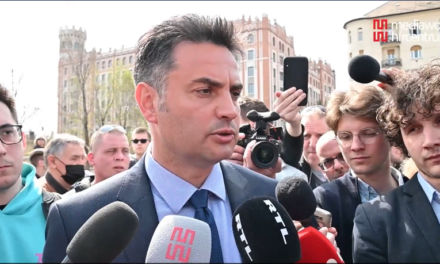I could sincerely apologize if I felt guilty, but even today I believe that I did not commit any crime with that drawing," said the cartoonist.
Szemlélek published an interview with Gábor Pápai, the cartoonist of Népszava, entitled "None of my accusers asked me what I wanted to convey with that drawing" .
A caricature is a pictorial representation with a humorous or sarcastic purpose, mainly a drawing or a print, which presents the characteristic features of a person or a scene in a deliberately exaggerated and distorted manner. In addition to innocent entertainment, its purpose can be ridicule, threats, warnings and criticism.
And precisely because it is a work of its own, with its own visual message, it is strange if a cartoonist expects his critics to ask him to explain verbally what each of his works is about.
Because if the meaning of a caricature needs to be explained, then the artist has not done his job well. Of course, there is another possibility here, which indicates that Gábor Pápai is not telling the truth and knows exactly what the problem is with his blasphemous drawing, why it offends the Christian community. He just doesn't care. Well, how much easier it is to make the real victims the scapegoats by being rigid in the pose of the injured victim.
Summary of the interview:
The creator of the famous caricature, made a year ago, says he is sorry if he caused pain to anyone. According to him, Christianity could do good for Hungarian society, even though he does not see God. At the beginning of the conversation, Pápai praised the Szemlélek portal, which, according to him, fills an important void in our country, "because it represents a voice that is unusual in Hungarian public discourse." He believes that there are other media that also have Christian themes, but they usually appear in line with the current government, in the spirit of so-called "Christian politics".

Photo: Dorottya Estó Harazin
Pápai explained:
it was worth it to draw that particular caricature, because a year ago he paid much more attention to the Christian faithful.
He complained that among those who accused him of blasphemy and anti-Christianity, no one asked him what he wanted to convey with that drawing.
"I never dreamed that my drawing would be interesting for more than a single day. I meant it as a little joke for the day, and honestly it never occurred to me that he would have such a dubious career. I wanted to hold a crooked mirror to the communication of the operational staff, whose central character, Cecília Müller, consistently repeated the term "underlying illness" in almost every case as an explanation for the deaths, more than once revealing the victims' ailments. That's all the drawing was about for me. If I were to change something afterwards, maybe I would rather put a smaller cross next to the chief medical officer, so that they don't see the suffering Jesus in it, but an object of grace, a reference point," he said.
He explained: after the drawing was completed, he showed it to his wife and one of the editors, but everyone concluded that the drawing was fine. "After the publication, it remained like that for a few days, then a portal claiming to be a defender of Christians attacked me, they also started a petition, and attached the religious defamation label to me," complains Pápai, and then explained: Hungarian society is permeated by Christianity, and this could be good for it. . However, regardless of this, there is a "political Christianity", which, according to him, is not good for this country.
This type of politics is based on the image of the enemy holding the camp together
he thought.
"Although the caricature in question is currently my most famous drawing, it is far from my best. It is about nothing but the communication of the operational staff. Politics, which needs evil, has made this drawing, and me, its new enemy, and it is already attacking in the fourth wave because of this. This also shows how poor in theme this villain-driven fight really is," he explains.
"If I apologized, I wouldn't be honest.
I could sincerely apologize if I felt guilty, but even today I believe that I did not commit any sin with that drawing"
- concludes the interview.
mandiner.hu, civilek.info













